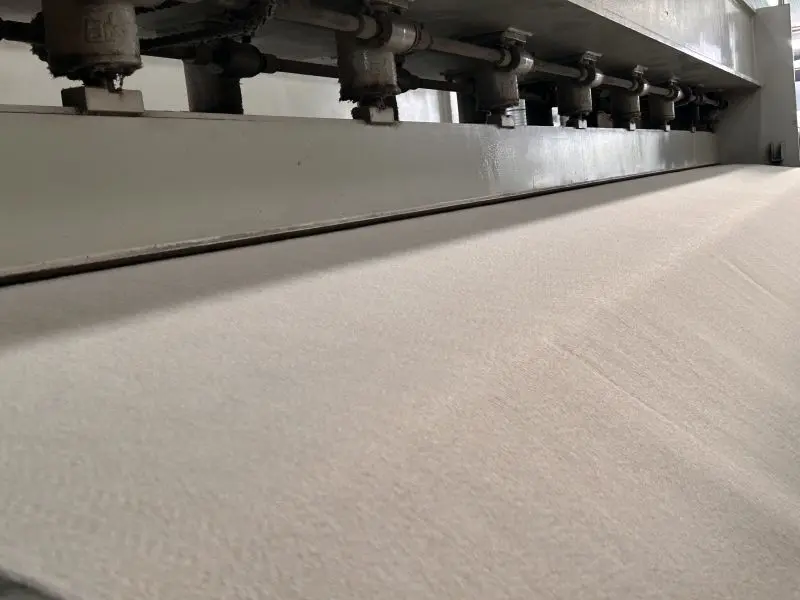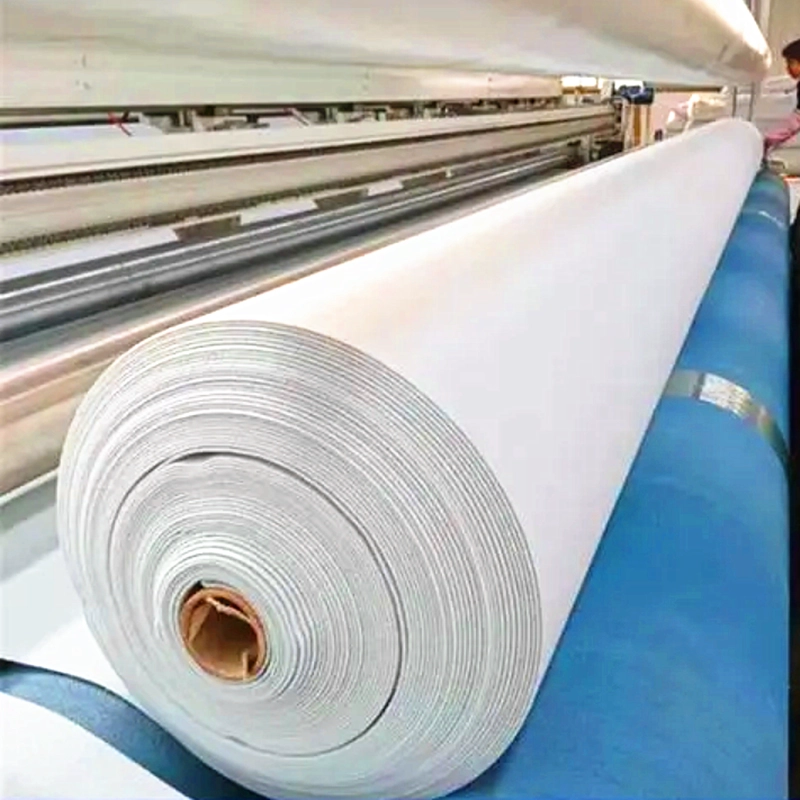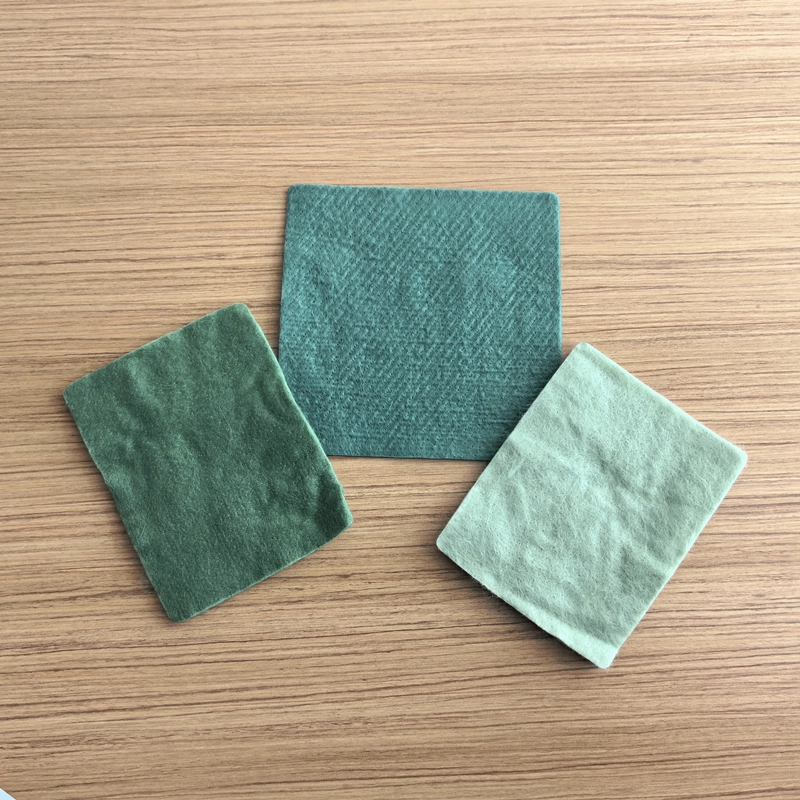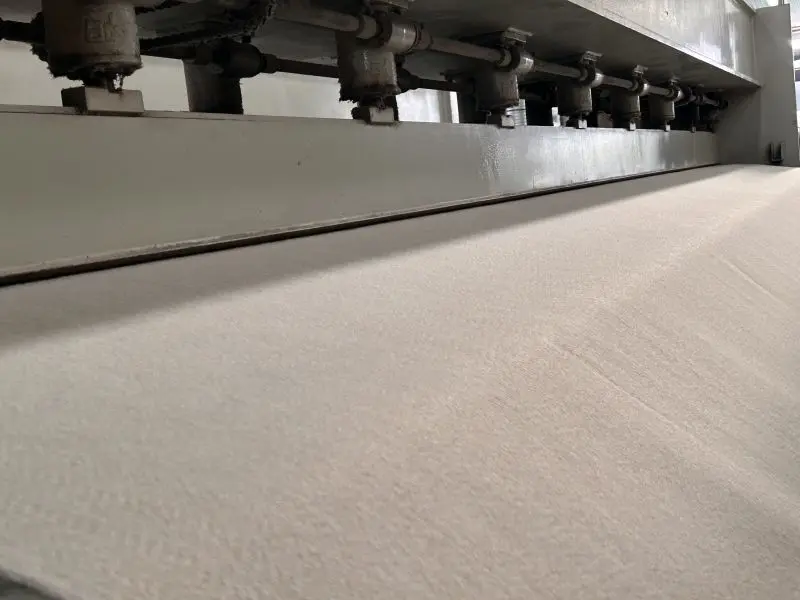Application of Geotextile in Gardening: Enhancing Sustainability and Growth
In the realm of gardening, where the delicate balance of nature is nurtured and maintained, the integration of innovative materials can significantly impact the health and longevity of plants. Geotextiles, a type of synthetic textile material, have found a pivotal role in gardening practices, revolutionizing the way we approach soil management, erosion control, and plant growth. From retaining soil moisture to preventing weed growth, geotextiles offer a myriad of benefits that cater to the diverse needs of gardeners and landscapers.

Understanding Geotextile: A Versatile Gardening Aid
Geotextiles are permeable fabrics made from synthetic fibers such as polyester, polypropylene, or polyethylene. These materials are engineered to withstand environmental stressors and provide essential support to soil structures. In the realm of gardening, geotextiles serve multiple purposes that contribute to the overall health and sustainability of plants:
1. Soil Erosion Control
One of the primary uses of geotextiles in gardening is erosion control. By stabilizing soil and preventing erosion caused by wind or water, geotextiles help maintain the integrity of garden beds and slopes. The non-woven structure of geotextiles allows water to infiltrate the soil while preventing the loss of valuable topsoil, thus protecting plant roots and promoting healthy growth.
2. Weed Suppression
Weeds are the bane of every gardener's existence, competing with cultivated plants for nutrients and sunlight. Geotextiles provide an effective barrier against weed growth by blocking sunlight and impeding weed germination. By laying geotextiles beneath mulch or decorative stones, gardeners can create a weed-free environment that reduces the need for chemical herbicides.
3. Moisture Retention
Maintaining adequate soil moisture is crucial for plant health, especially in arid climates or during dry spells. Geotextiles with moisture retention properties help conserve water by reducing evaporation and promoting efficient water distribution within the soil. This feature not only benefits plants by ensuring consistent hydration but also contributes to water conservation efforts.
4. Temperature Regulation
Geotextiles act as insulating layers that moderate soil temperatures, protecting plant roots from extreme heat or cold. By providing a buffer against temperature fluctuations, geotextiles create a stable microclimate that supports optimal plant growth throughout the changing seasons.
5. Soil Aeration
Healthy soil requires adequate aeration for root development and nutrient uptake. Geotextiles with breathable properties facilitate air exchange within the soil, preventing compaction and promoting root growth. This aeration mechanism enhances soil fertility and overall plant vigor, leading to improved garden productivity.
Practical Applications of Geotextile in Gardening
In gardening and landscaping projects, the versatility of geotextiles is showcased through various applications that cater to different needs:
1. Raised Bed Gardening
For raised bed gardens, geotextiles form a protective barrier at the bottom of the beds, preventing soil leaching and providing drainage pathways for excess water. By using geotextiles in raised beds, gardeners can extend the lifespan of the soil and create optimal growing conditions for plants.
2. Greenhouse Flooring
In greenhouse setups, geotextiles serve as an essential component of flooring systems, offering weed control, moisture regulation, and soil protection. By incorporating geotextiles in greenhouse flooring, gardeners can maintain a clean and conducive environment for plant growth while reducing maintenance efforts.
3. Landscaping Projects
In landscaping applications, geotextiles are used to reinforce slopes, stabilize embankments, and create erosion-resistant surfaces. By integrating geotextiles into landscaping designs, gardeners can enhance the structural integrity of outdoor spaces and promote sustainable land management practices.
Benefits of Geotextiles for Gardens
Geotextiles offer a multitude of benefits for your garden, enhancing soil health, promoting plant growth, and simplifying maintenance tasks. By incorporating geotextiles into your gardening practices, you can experience:
Improved Soil Structure: Geotextiles help stabilize soil, prevent erosion, and reduce compaction, creating an optimal environment for root growth and nutrient uptake. Studies have shown that geotextiles improve soil structure by enhancing water infiltration and reducing soil runoff, leading to healthier and more fertile soil conditions.
Weed Control: Weed suppression is a common challenge for gardeners, but geotextiles provide an effective solution by blocking sunlight and preventing weed growth. Research has demonstrated that geotextiles can significantly reduce weed infestations, minimizing the need for herbicides and manual weeding, thus saving time and effort in garden maintenance.
Water Conservation: Geotextiles with moisture retention properties help conserve water by reducing evaporation and promoting efficient water distribution within the soil. A case study conducted in a garden setting showed that the use of geotextiles resulted in a 30% reduction in water usage, leading to sustainable water management practices and cost savings for gardeners.
Enhanced Plant Health: By regulating soil temperature, promoting aeration, and protecting roots from environmental stressors, geotextiles contribute to overall plant health and vitality. Research has indicated that plants grown with the support of geotextiles exhibit increased growth rates, higher yields, and improved resistance to diseases and pests.
Incorporating geotextiles into your gardening routine can transform your garden into a thriving and sustainable ecosystem, providing long-term benefits for both plants and the environment.

Are Geotextiles Environmentally Friendly?
Geotextiles are considered environmentally friendly due to their sustainable properties and positive impact on soil conservation and plant health. Here's why geotextiles are an eco-conscious choice for gardening:
Biodegradability: Many geotextiles are designed to be biodegradable, breaking down naturally over time without leaving harmful residues in the soil. Research has shown that biodegradable geotextiles promote soil health by facilitating the decomposition of organic matter, enriching soil fertility, and supporting microbial activity.
Erosion Prevention: By stabilizing soil and preventing erosion, geotextiles contribute to the preservation of natural habitats and landscapes. Case studies have demonstrated that the use of geotextiles in erosion-prone areas can reduce soil loss by up to 90%, protecting valuable topsoil and preventing sediment runoff into water bodies.
Chemical-Free Weed Control: Unlike chemical herbicides that can harm beneficial organisms and pollute the environment, geotextiles offer a safe and sustainable solution for weed control. Studies have shown that geotextiles reduce the reliance on herbicides, promoting a healthier ecosystem and minimizing the impact of harmful chemicals on soil and water quality.
Water Conservation: Geotextiles with moisture retention properties promote water conservation by reducing the need for frequent irrigation and preventing water wastage. Research has indicated that gardens using geotextiles consume up to 50% less water compared to traditional gardening methods, contributing to water resource sustainability and environmental conservation.
By choosing geotextiles for your gardening needs, you not only enhance the health and productivity of your garden but also contribute to a greener and more sustainable environment.
Choosing the Right Geotextile for Your Gardening Project
Choosing the right geotextile for your gardening project is crucial to ensure optimal performance and long-term benefits. Here are key factors to consider when selecting a geotextile:
Material Composition: Geotextiles are available in various materials such as polyester, polypropylene, and polyethylene, each offering specific properties suited for different applications. For example, polypropylene geotextiles are commonly used for weed control, while polyester geotextiles are preferred for soil stabilization and erosion control.
Permeability: The permeability of a geotextile determines its ability to allow water and air to pass through while retaining soil particles. Depending on your garden's drainage needs, choose a geotextile with the appropriate permeability to ensure optimal water infiltration and soil aeration.
UV Resistance: If your gardening project involves exposure to sunlight, opt for a geotextile with UV resistance to prolong its lifespan and maintain its structural integrity. UV-resistant geotextiles are designed to withstand prolonged sun exposure without degradation, ensuring long-lasting performance in outdoor environments.
Thickness and Strength: Consider the thickness and strength of the geotextile based on the specific requirements of your project. Thicker geotextiles offer greater durability and support for heavy loads, while strength properties determine the material's ability to withstand tension and puncture forces.

Best Practices for Installing Geotextiles in Your Garden
Installing geotextiles in your garden requires careful planning and execution to maximize their effectiveness. Here are some best practices to follow when installing geotextiles for your gardening project:
Prepare the Site: Before installing geotextiles, clear the area of debris, rocks, and weeds. Level the ground to create a smooth surface for laying the geotextile fabric.
Select the Right Geotextile: Choose a geotextile that suits your specific needs based on factors such as material composition, permeability, UV resistance, thickness, and strength. Ensure the geotextile selected aligns with the requirements of your garden project.
Cut and Position: Cut the geotextile fabric to the desired size, allowing for some overlap at the edges. Position the geotextile over the prepared area, ensuring it covers the entire surface evenly.
Secure the Edges: Anchor the edges of the geotextile with landscape staples or pins to prevent shifting or lifting. Secure the fabric at regular intervals along the perimeter and seams to maintain its position.
Overlap and Seam Sealing: If multiple pieces of geotextile are required, overlap the edges by a few inches to ensure proper coverage. Use adhesive or heat sealing methods to create strong seams and prevent gaps that could compromise the fabric's integrity.
Install Mulch or Soil: Once the geotextile is in place, add a layer of mulch or soil on top to provide additional protection and aesthetics. Mulch helps regulate soil temperature, retain moisture, and further suppress weed growth.
Planting: Cut X-shaped slits in the geotextile where plants will be placed to allow for root growth. Ensure the slits are large enough for the plant to establish itself while still providing support and protection.
Maintenance: Regularly inspect the geotextile for any signs of damage or displacement. Address any issues promptly to maintain the effectiveness of the geotextile and preserve its benefits for your garden.
By following these best practices for installing geotextiles in your garden, you can create a supportive environment for plant growth, enhance soil health, and enjoy the long-lasting benefits of geotextile technology.

Haoyang Environmental Co., Ltd.: Your Partner in Sustainable Gardening
At Haoyang Environmental Co., Ltd., we are committed to advancing environmental sustainability through innovative geosynthetic solutions. Since our establishment in June 2008, Haoyang has been at the forefront of geotextile research and development, offering a comprehensive range of products and services tailored to the needs of gardeners, landscapers, and environmental enthusiasts.
Our company's commitment to quality is reflected in our ISO 9001, ISO 14001, and OHSAS 18001 certifications, ensuring that our products meet the highest standards of performance and environmental responsibility. As a recognized leader in environmental engineering and material science, Haoyang continues to drive innovation in soil remediation, erosion control, and sustainable gardening practices.
With a dedicated team of technical experts and a wealth of patents and certifications, Haoyang stands as a trusted partner for all your geotextile needs. Whether you are looking to enhance soil fertility, protect against erosion, or create a thriving garden ecosystem, Haoyang's products offer the reliability and performance you need to achieve your gardening goals.
Embrace the power of geotextiles in your gardening endeavors and experience the difference that sustainable materials can make in nurturing vibrant and resilient plant life. Partner with Haoyang Environmental Co., Ltd. for cutting-edge geotextile solutions that elevate your gardening experience and contribute to a greener, healthier environment.
In conclusion, the application of geotextiles in gardening represents a harmonious blend of technology and nature, where innovation meets sustainability to foster growth and resilience. By harnessing the benefits of geotextiles for soil management, erosion control, and plant health, gardeners can cultivate thriving landscapes that flourish for years to come. As you embark on your gardening journey, consider the transformative potential of geotextiles and the positive impact they can have on your gardening practices and the environment at large.
About Haoyang Environmental Co., Ltd.:
Haoyang Environmental Co., Ltd. (Haoyang) was established in June 2008 as a high-tech comprehensive service provider specializing in geosynthetic material research and development, environmental engineering consulting, design, construction, soil remediation, and comprehensive solid waste treatment. Haoyang is dedicated to advancing environmental sustainability through innovative geosynthetic solutions and is recognized for its commitment to quality and excellence in the field of environmental engineering. For more information about our products and services, please feel free to contact us.

897.webp)
942.webp)
237.webp)